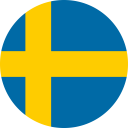| Hari Srinivas | |
| Policy Analysis Series E-196. September 2023. |
Abstract
This document explores the significance of gender-inclusive policies in achieving gender equality and social justice. It examines the rationale behind gender-inclusive policy development and implementation, highlighting its potential impact on various spheres of society.
The document provides insights into key strategies, challenges, and best practices in formulating and implementing gender-inclusive policies, emphasizing the importance of mainstreaming gender considerations across sectors. It also explores the role of stakeholders, including governments, civil society organizations, and international bodies, in fostering an inclusive policy environment that addresses gender disparities.
Keywords
Gender-inclusive policy, Gender equality, Social justice, Policy development, Mainstreaming gender, Stakeholder engagement
Gender Inclusiveness in public policy making promotes gender-balanced management and takes gender perspectives into consideration in every decision-making, planning, and administration process at every level of the state government.
What is a ďgender-inclusive policyĀE A gender-responsive policy takes into account both womenís and menís interests and needs. It is an inclusive policy that also considers the unique needs of subgroups within the dominant framework of gender (for example, the youth; the elderly; people with disabilities; the lesbian, gay, bisexual, transgender, and intersex community; ethnic and religious minorities, indigenous groups). Policies can be either gender specific (for example, a policy to promote gender equality in Parliament) or a gender-integrated policy (for example, a policy on natural resource management that includes elements specific to womenís and menís needs).
 |
Ensuring that policy-making is gender-inclusive requires deliberate effort and a multi-faceted approach. Some of the popular strategies that have been implemented to meet this goal include: |
- Conduct Gender Analysis:
Gender analysis is a process of examining how policies and programs affect women and men differently. It helps policymakers to understand the different needs, challenges, and priorities of women and men and to ensure that policies are inclusive. Gender analysis should be carried out at every stage of the policy-making process, from planning to implementation and evaluation.
Some examples of policies that promote gender analysis in policy making
- Mandating gender analysis in all policy proposals before they are approved.
- Allocating funding for research and studies on the gendered impact of policies.
- Establishing guidelines and training programs for policymakers to conduct gender analysis effectively.
- Creating a feedback mechanism for stakeholders to provide input on the gendered impact of policies.
 Sweden: The Swedish government has a long-standing commitment to gender mainstreaming and conducts gender analysis at various stages of policy development to ensure equal opportunities for women and men.
Sweden: The Swedish government has a long-standing commitment to gender mainstreaming and conducts gender analysis at various stages of policy development to ensure equal opportunities for women and men.
 Canada: The Government of Canada has integrated gender-based analysis into its policy-making process to assess the potential impact of policies on diverse groups and identify gender-based disparities.
Canada: The Government of Canada has integrated gender-based analysis into its policy-making process to assess the potential impact of policies on diverse groups and identify gender-based disparities.
 Rwanda: The Rwandan government has institutionalized gender analysis in its policy formulation process, known as the Gender Responsive Planning and Budgeting (GRPB) framework, to address gender inequalities and promote women's empowerment.
Rwanda: The Rwandan government has institutionalized gender analysis in its policy formulation process, known as the Gender Responsive Planning and Budgeting (GRPB) framework, to address gender inequalities and promote women's empowerment.
- Engage Women in the Policy-Making Process:
Women's participation in the policy-making process is crucial to ensure that their voices and perspectives are heard. Policymakers should engage women in consultations, public hearings, and other forms of participation to ensure that their needs and priorities are reflected in policies.
Some steps that can ensure that women are better engaged in policy making include:
- Implementing quotas or targets to ensure a minimum representation of women in decision-making bodies.
- Providing financial and logistical support to women's organizations to participate in policy consultations.
- Establishing women's advisory groups or committees to provide input on policy development.
- Conducting outreach campaigns to encourage women's participation in public consultations and hearings.
 Norway: Norway has implemented gender quotas, known as the "40% rule," requiring public limited companies to have at least 40% representation of each gender on their boards. This policy has increased women's participation in decision-making positions.
Norway: Norway has implemented gender quotas, known as the "40% rule," requiring public limited companies to have at least 40% representation of each gender on their boards. This policy has increased women's participation in decision-making positions.
 Bolivia: The Bolivian government has promoted women's participation in the policy-making process through the establishment of women's grassroots organizations and the incorporation of women's voices in constitutional reforms.
Bolivia: The Bolivian government has promoted women's participation in the policy-making process through the establishment of women's grassroots organizations and the incorporation of women's voices in constitutional reforms.
 Australia: The Australian government has implemented initiatives to increase women's participation in public consultations, such as the "Women's Budget Group," which engages women's organizations in the budget formulation process.
Australia: The Australian government has implemented initiatives to increase women's participation in public consultations, such as the "Women's Budget Group," which engages women's organizations in the budget formulation process.
- Use Gender-Disaggregated Data:
Gender-disaggregated data is data that is collected and analyzed separately for women and men. It helps policymakers to identify gender-based inequalities and to design policies that address them. Policymakers should collect and use gender-disaggregated data in all stages of policy-making.
Some examples of using gender-disaggregated data include:
- Establishing a centralized database for gender-disaggregated data collection and analysis.
- Developing guidelines for data collection agencies to ensure gender-disaggregated data is collected consistently.
- Training policymakers and analysts on how to interpret and use gender-disaggregated data effectively.
- Regularly publishing gender-disaggregated data reports to raise awareness about gender-based inequalities.
 Iceland: Iceland has developed a comprehensive gender-disaggregated data collection system to monitor and address gender-based inequalities. This data is used to inform policy-making and evaluate the impact of gender equality initiatives.
Iceland: Iceland has developed a comprehensive gender-disaggregated data collection system to monitor and address gender-based inequalities. This data is used to inform policy-making and evaluate the impact of gender equality initiatives.
 South Africa: The South African government has implemented the South African Gender Indicator Framework, which includes gender-disaggregated data collection to assess progress in achieving gender equality goals across various sectors.
South Africa: The South African government has implemented the South African Gender Indicator Framework, which includes gender-disaggregated data collection to assess progress in achieving gender equality goals across various sectors.
 United Kingdom: The UK government has established the Gender and Equality Evidence Programme, which collects and analyzes gender-disaggregated data to inform policy development and monitor gender inequalities.
United Kingdom: The UK government has established the Gender and Equality Evidence Programme, which collects and analyzes gender-disaggregated data to inform policy development and monitor gender inequalities.
- Ensure Gender-Balanced Representation:
Gender-balanced representation means ensuring that women and men have equal opportunities to participate in policy-making. Policymakers should strive to achieve gender balance in all decision-making bodies, including parliament, government, and civil society organizations.
Some examples of ensuring gender-balanced representation in policy-making include:
- Introducing legislation to enforce gender quotas for political party candidate lists.
- Implementing outreach programs to encourage women to run for political office or leadership positions.
- Providing funding and resources for training programs to enhance women's leadership skills.
- Establishing mentorship programs to support aspiring women leaders in their political careers.
 France: France has introduced legislation requiring gender parity in electoral candidate lists, ensuring equal representation of women and men in political decision-making positions.
France: France has introduced legislation requiring gender parity in electoral candidate lists, ensuring equal representation of women and men in political decision-making positions.
 Belgium: The Belgian government has implemented gender quotas for corporate boards and public administration to increase women's representation in leadership positions.
Belgium: The Belgian government has implemented gender quotas for corporate boards and public administration to increase women's representation in leadership positions.
 India: Several Indian states, such as Bihar, Himachal Pradesh, and Odisha, have implemented reservation policies to ensure a minimum representation of women in local governance bodies.
India: Several Indian states, such as Bihar, Himachal Pradesh, and Odisha, have implemented reservation policies to ensure a minimum representation of women in local governance bodies.
- Implement Gender-Responsive Budgeting:
Gender-responsive budgeting is a process of analyzing and adjusting budgets to promote gender equality. Policymakers should incorporate gender-responsive budgeting in their policy-making process to ensure that policies are adequately funded to meet the needs of both women and men.
Some examples of steps being taken to implement gender-responsive budgeting include:
- Integrating gender analysis into the budget formulation process to identify gender-specific needs.
- Allocating dedicated funds to address gender disparities and promote gender equality.
- Monitoring and evaluating the impact of budget allocations on gender equality outcomes.
- Conducting gender audits of existing budgets to identify areas for improvement.
 Philippines: The Philippines has institutionalized gender-responsive budgeting (GRB) through the Gender and Development (GAD) Budget Policy. This policy requires all government agencies to allocate a certain percentage of their budgets to address gender concerns and promote gender equality.
Philippines: The Philippines has institutionalized gender-responsive budgeting (GRB) through the Gender and Development (GAD) Budget Policy. This policy requires all government agencies to allocate a certain percentage of their budgets to address gender concerns and promote gender equality.
 Sweden: Sweden has been a pioneer in implementing gender-responsive budgeting. The government integrates gender equality perspectives into the budget process, ensuring that resources are allocated to address gender disparities and meet the specific needs of women and men.
Sweden: Sweden has been a pioneer in implementing gender-responsive budgeting. The government integrates gender equality perspectives into the budget process, ensuring that resources are allocated to address gender disparities and meet the specific needs of women and men.
 South Korea: South Korea has introduced gender-responsive budgeting in various sectors, including health, employment, and social welfare. The government incorporates gender analysis into budget formulation to ensure gender equality considerations are taken into account.
South Korea: South Korea has introduced gender-responsive budgeting in various sectors, including health, employment, and social welfare. The government incorporates gender analysis into budget formulation to ensure gender equality considerations are taken into account.
- Address Structural Inequalities:
Policymakers should address structural inequalities such as patriarchy, sexism, and gender-based violence, which prevent women from fully participating in the policy-making process. They should promote gender equality in all areas of society, including education, health, employment, and political participation.
Some of the ways in addressing structural inequalities include:
- Enacting legislation to prevent gender-based violence and provide comprehensive support services for survivors.
- Implementing gender-sensitive educational curricula to challenge gender stereotypes and promote gender equality.
- Establishing policies and programs to promote equal pay for equal work and address gender-based discrimination in the workplace.
- Providing accessible healthcare services that address women's specific health needs and ensure reproductive rights.
 Canada: Canada has implemented policies and initiatives to address gender-based violence, such as the National Action Plan on Gender-Based Violence, which includes measures to prevent violence, support survivors, and promote awareness and education.
Canada: Canada has implemented policies and initiatives to address gender-based violence, such as the National Action Plan on Gender-Based Violence, which includes measures to prevent violence, support survivors, and promote awareness and education.
 New Zealand: New Zealand has focused on addressing gender inequalities through policy interventions, including initiatives to eliminate the gender pay gap, increase women's representation in leadership positions, and prevent and respond to gender-based violence.
New Zealand: New Zealand has focused on addressing gender inequalities through policy interventions, including initiatives to eliminate the gender pay gap, increase women's representation in leadership positions, and prevent and respond to gender-based violence.
 Uruguay: Uruguay has implemented comprehensive policies to promote gender equality, including campaigns to challenge traditional gender roles and stereotypes, efforts to prevent and address gender-based violence, and initiatives to promote women's economic empowerment.
Uruguay: Uruguay has implemented comprehensive policies to promote gender equality, including campaigns to challenge traditional gender roles and stereotypes, efforts to prevent and address gender-based violence, and initiatives to promote women's economic empowerment.
Mainstreaming gender inclusive policy making
In order to foster gender-inclusive policy-making, policymakers must adopt a multi-faceted approach that incorporates various strategies. First and foremost, conducting gender analysis throughout the policy-making process is crucial. This involves systematically examining how policies and programs affect women and men differently, ensuring that the needs, challenges, and priorities of both genders are addressed.
Policymakers should also actively engage women in the policy-making process, seeking their participation and input through consultations, public hearings, and other forms of engagement. By incorporating diverse perspectives, policies become more inclusive and responsive to the specific needs of women. Furthermore, policymakers should prioritize the collection and utilization of gender-disaggregated data, enabling evidence-based decision-making and the identification of gender-based inequalities. This data is vital for designing targeted policies that promote gender equality.
To encourage gender-inclusive policy-making, policymakers must also strive to achieve gender-balanced representation in decision-making bodies. This requires implementing measures such as quotas or targets to ensure equal opportunities for women's participation. By enhancing the representation of women, diverse voices and experiences can be integrated into policy discussions, resulting in more comprehensive and effective outcomes.
Additionally, the implementation of gender-responsive budgeting is crucial. Policymakers should analyze and adjust budgets to promote gender equality, ensuring that policies are adequately funded to meet the specific needs of both women and men. By allocating resources in a gender-responsive manner, policymakers can address gender disparities and advance gender equality goals.
Policymakers must also address structural inequalities that hinder women's full participation in the policy-making process. This entails tackling deeply-rooted issues such as patriarchy, sexism, and gender-based violence. By promoting gender equality in all areas of society, including education, health, employment, and political participation, policymakers can create an enabling environment where women's voices are heard and valued.
It is crucial to enact legislation and implement comprehensive policies that prevent and address gender-based violence, promote women's economic empowerment, challenge gender stereotypes, and ensure equal opportunities for women in all spheres of life. By addressing these structural barriers, policymakers can foster an inclusive policy-making process that truly reflects the diverse needs and aspirations of all members of society.
The above issues highlight the importance of gender analysis, women's participation, gender-disaggregated data, gender-balanced representation, gender-responsive budgeting, and addressing structural inequalities as key elements for policymakers to promote gender-inclusive policy-making.
Acknowledgement:
This document is an expansion of the work done by the author at the Gender and Development Unit at the Asian Institute of Technology in Bangkok, Thailand.
Further Reading:
- United Nations. (2020). Policy Brief: The Impact of COVID-19 on Women. Retrieved from https://www.unwomen.org/-/media/headquarters/attachments/sections/library/publications/2020/policy-brief-the-impact-of-covid-19-on-women-en.pdf?la=en&vs=1406
- European Institute for Gender Equality. (2020). Gender Equality in Power and Decision-Making. Retrieved from https://eige.europa.eu/publications/gender-equality-power-and-decision-making
- World Bank Group. (2020). Gender Equality, Poverty Reduction, and Inclusive Growth: A Literature Review. Retrieved from http://documents1.worldbank.org/curated/en/719871571848920150/pdf/133664-WP-PUBLIC-P159110.pdf
- European Institute for Gender Equality. (2019). Gender Equality Index 2019: Measuring gender equality in the European Union 2005-2017. Retrieved from https://eige.europa.eu/sites/default/files/documents/mh0619609enn_002.pdf
- International Labour Organization. (2018). Women in Business and Management: Gaining Momentum. Retrieved from https://www.ilo.org/wcmsp5/groups/public/---dgreports/---dcomm/documents/publication/wcms_625103.pdf
- World Economic Forum. (2020). Global Gender Gap Report 2020. Retrieved from https://www.weforum.org/reports/gender-gap-2020-report-100-years-pay-equality
- Organisation for Economic Co-operation and Development. (2019). The Pursuit of Gender Equality: An Uphill Battle. Retrieved from https://www.oecd-ilibrary.org/social-issues-migration-health/the-pursuit-of-gender-equality_9789264300544-en
- Canadian Human Rights Commission. (2021). Gender-based Analysis Plus (GBA+). Retrieved from https://www.chrc-ccdp.gc.ca/eng/content/gender-based-analysis-plus-gba
|
|
 |
Return to Gender and Development Contact:
|
